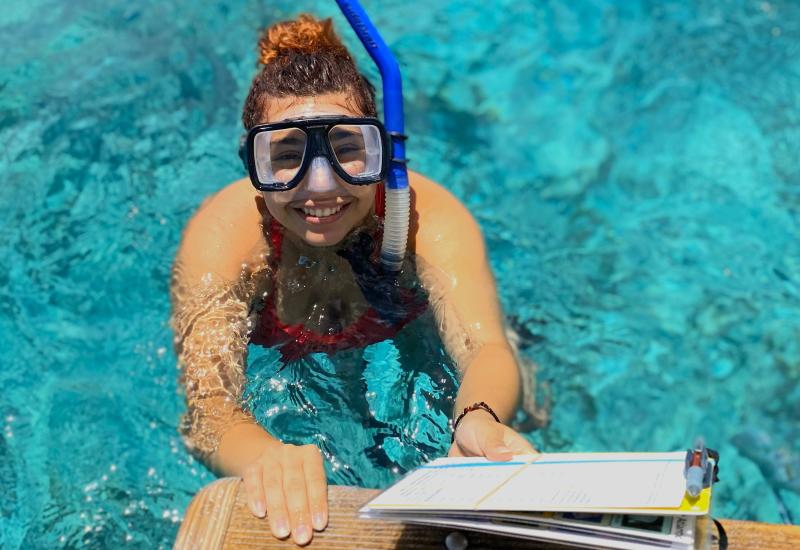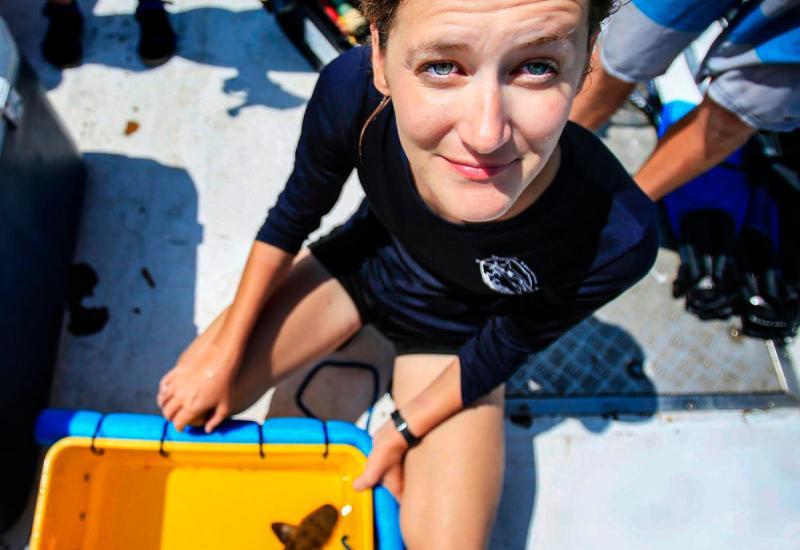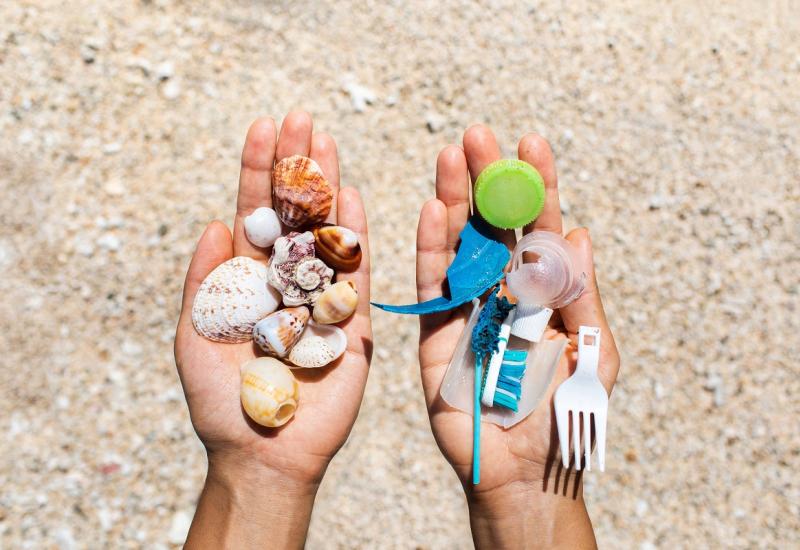Get Involved With Lionfish Derbies

Lionfish derbies aren’t a new idea. Since 2009, Reef Environmental Education Foundation (REEF) — a marine conservation nonprofit headquartered in Key Largo, Florida — has literally spearheaded the problem, recruiting divers across the Southeast United States, Central America and the Caribbean for single-day tournaments called derbies, where divers receive tools and training necessary to remove as many lionfish as possible while scuba and free diving.
But how much good can one day do against a problem as vast as the lionfish invasion, which now extends as far north as Massachusetts, as far south as Venezuela, and throughout the entire Caribbean and Gulf of Mexico — an area larger than the entire United States?
New research suggests the answer is: plenty.
In one example, divers removed a whopping 1,043 lionfish during the 2012 Palm Beach County Lionfish Derby. According to lionfish prey-consumption models, those 1,043 lionfish would have consumed 2 million to 8.8 million prey fish over the next year. Ongoing research conducted in the Florida Keys and Bahamas by REEF and Dr. Stephanie Green of Oregon State University indicates single-day derbies can effectively reduce local lionfish populations by as much as 70 percent over an area of nearly 40 square miles.
Effective derbies have widespread impacts beyond the ecological benefits of removing large numbers of lionfish. Those include:
Training divers and promoting year-round removals. During meetings prior to derbies, divers are trained to properly collect and handle venomous lionfish, increasing success and safety of participants. The goal is to build a volunteer removal force and encourage divers to remove lionfish throughout the year.
Providing specimens for research. In the past five years, tens of thousands of lionfish have been collected during derbies. While scientists often lack resources to acquire ample research specimens, REEF derbies conveniently provide thousands of lionfish samples. Length, weight, age, diet, reproductive status and genetics are assessed. Collecting data year after year in the same location tells scientists how the population is changing over time, and how it compares to populations in other regions.
Educating the public. Much of the general public still does not know about the lionfish problem. Local, national and international media coverage of derby events helps educate the public and raise awareness, even in areas not directly geographically connected to the invasion.
Developing a commercial market. After lionfish are brought in and scored, volunteers fillet and cook them, and the public is invited to free tastings. This is the first time many spectators have tasted lionfish, or learned how to safely handle or fillet them. These tastings encourage the consumption of lionfish in local restaurants. REEF also publishes a cookbook devoted to lionfish recipes.
Encouraging local derbies. REEF began a “sanctioned” lionfish-derby program this year to provide tools, direction and promotion for lionfish-hunting enthusiasts who want to start tournaments in their area. Recreational and professional divers realize that humans caused this invasion — probably introduced through the recreational aquarium trade in the mid-1980s — and it’s humans who must do something about it. Until other viable control strategies emerge, derbies remain an effective — and exhilarating — tool in the arsenal against the invasion.
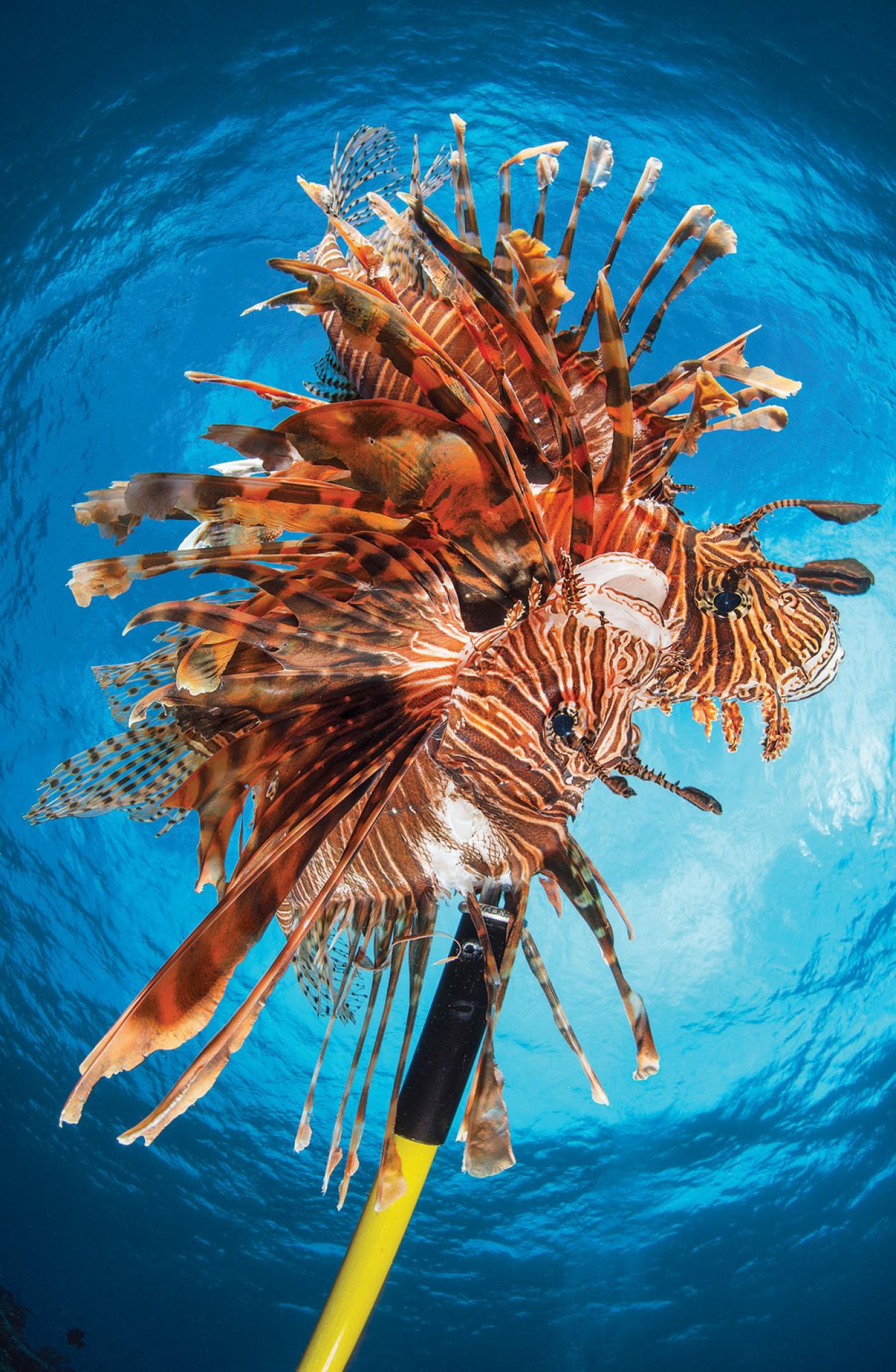
Alex Mustard, Naturepl.com
During lionfish derbies, trained divers remove lionfish throughout the year. Removal of these venemous fish will help the native reef-fish population produce once again.
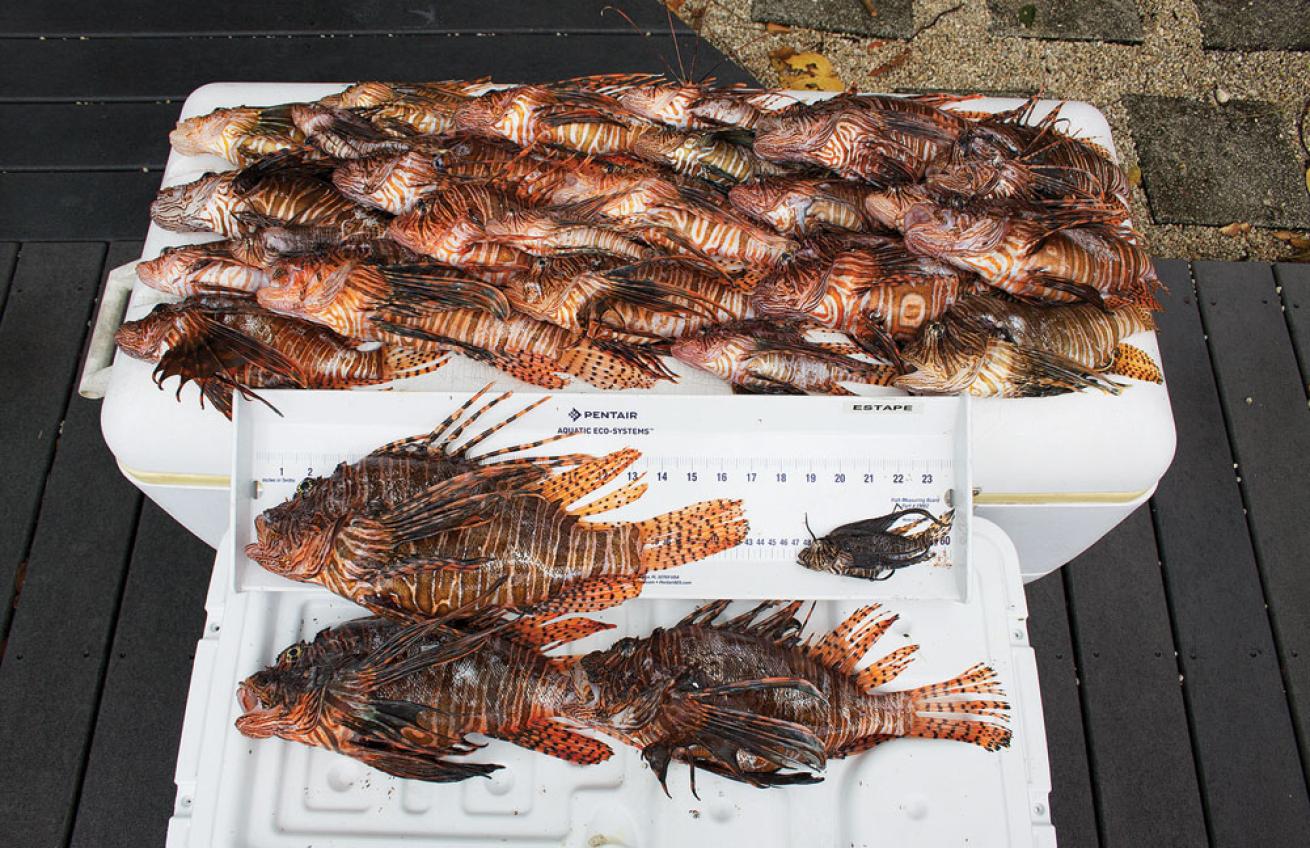
Carlos Estape
divers removed a whopping 1,043 lionfish during the 2012 Palm Beach County Lionfish Derby. According to lionfish prey-consumption models, those 1,043 lionfish would've consumed 2 million to 8.8 million prey fish over the next year.
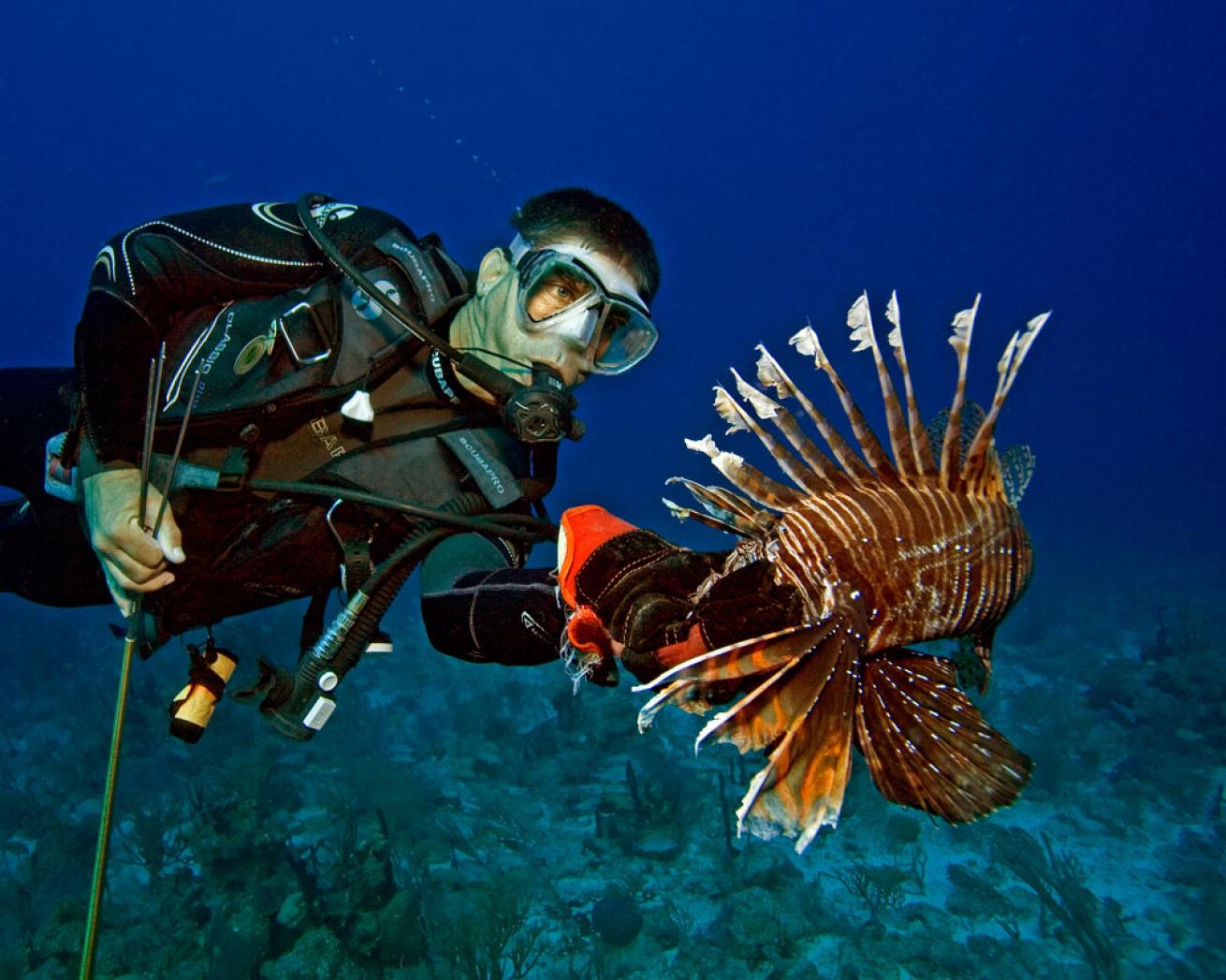
Lad Akins
Although lionfish have no controlling predators in the invaded range, diver removals are an effective method of reducing lionfish populations.
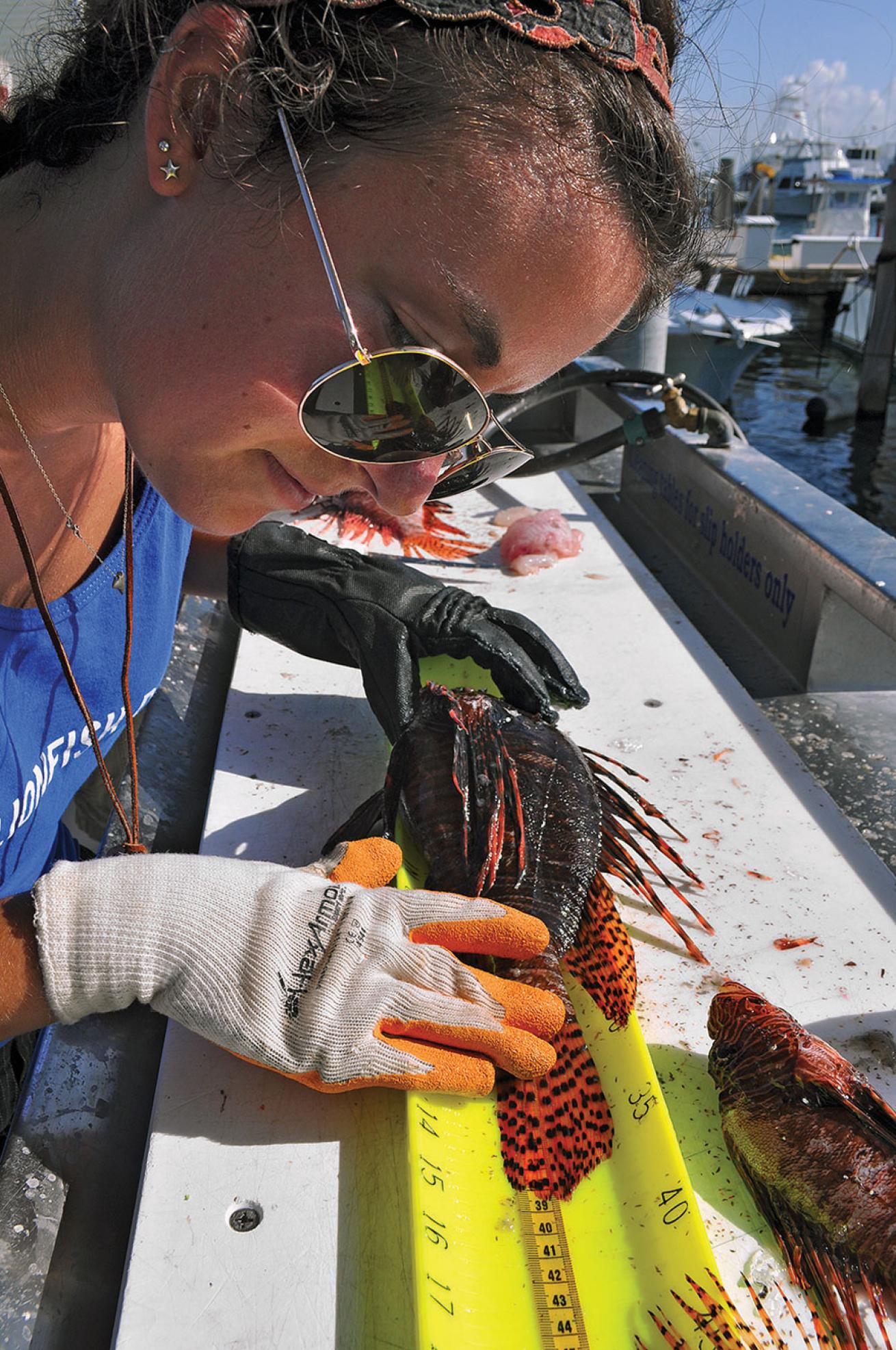
Courtesy REEF
REEF derbies conveniently provide thousands of lionfish samples for scientists.
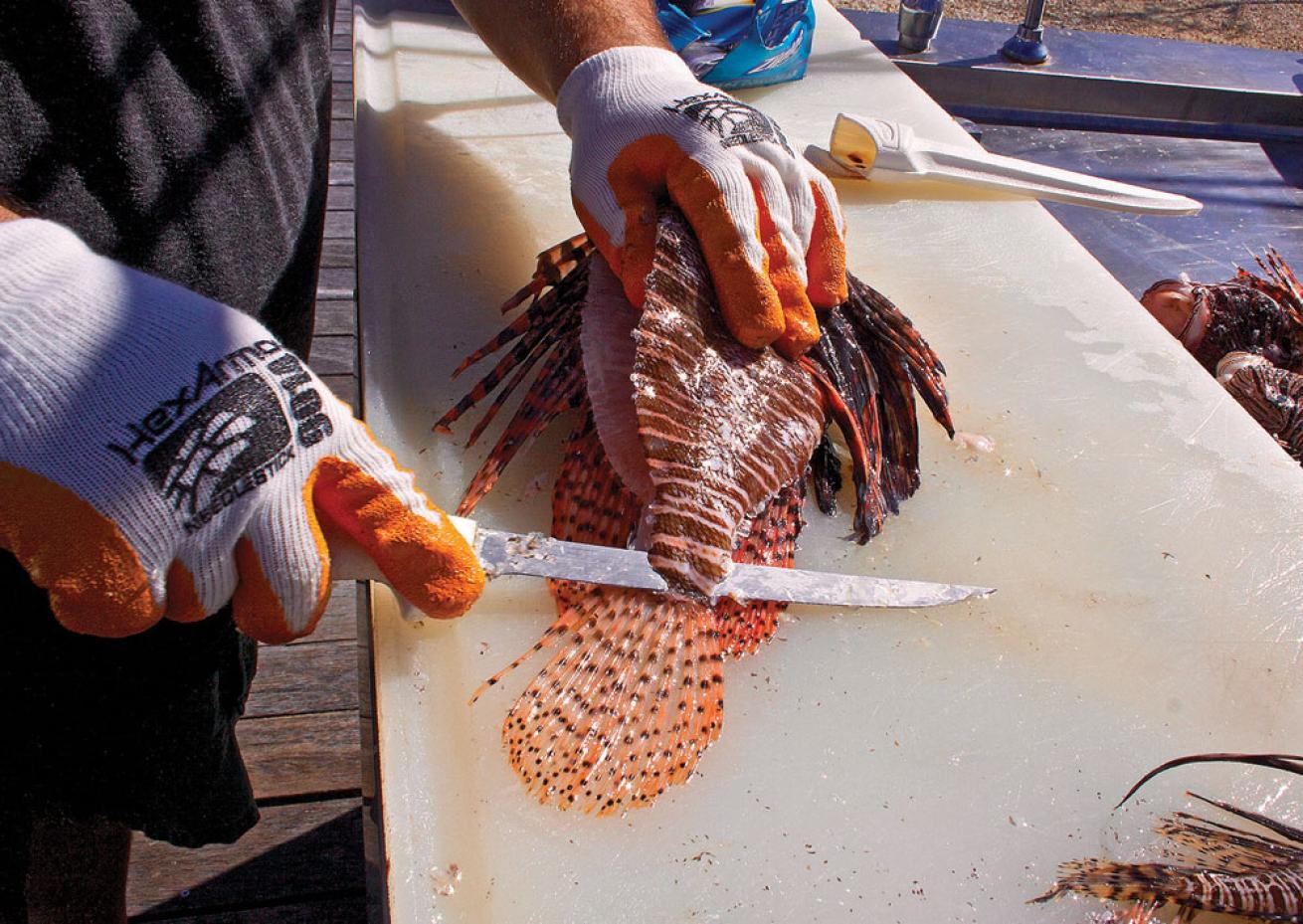
Carlos Estape
After lionfish are brought in and scored, volunteers fillet and cook them, and the public is invited to free tastings.
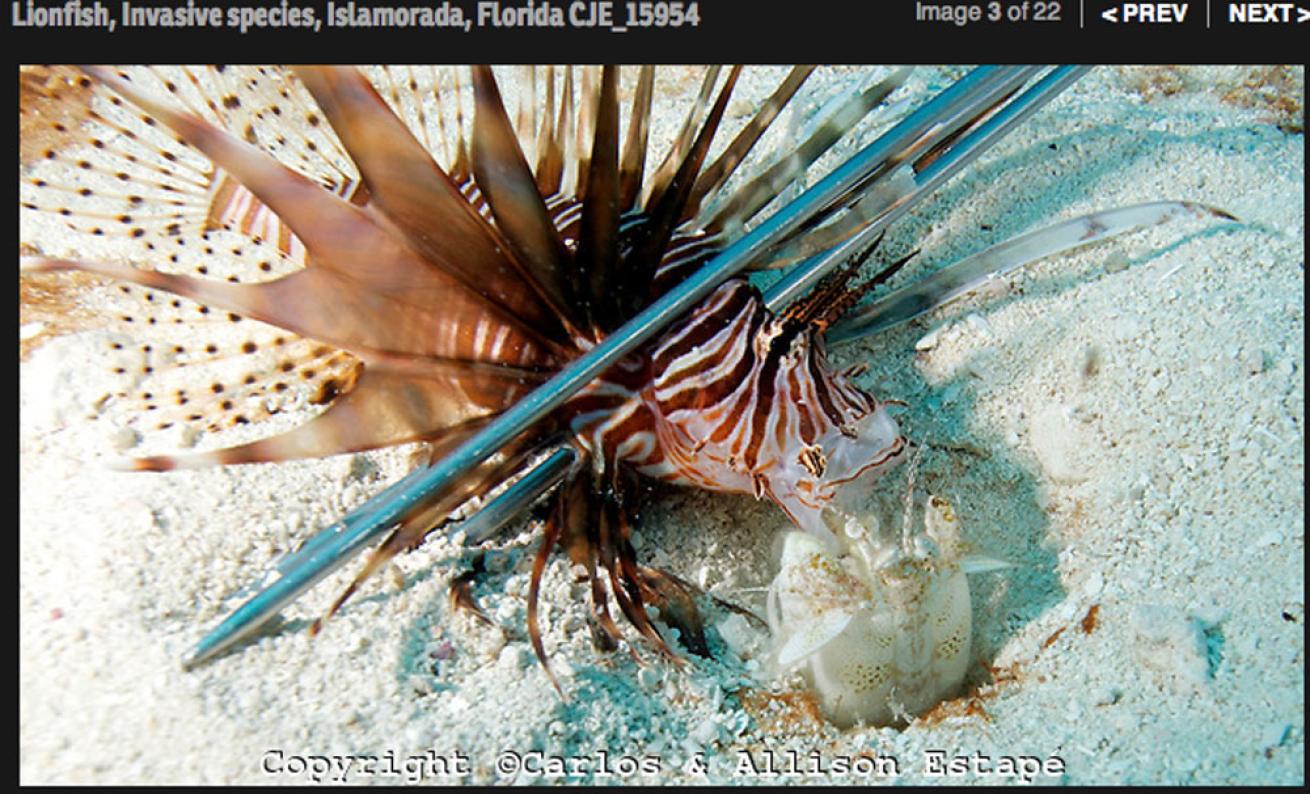
Carlos Estape
Lionfish are armed with 18 venemous spines.
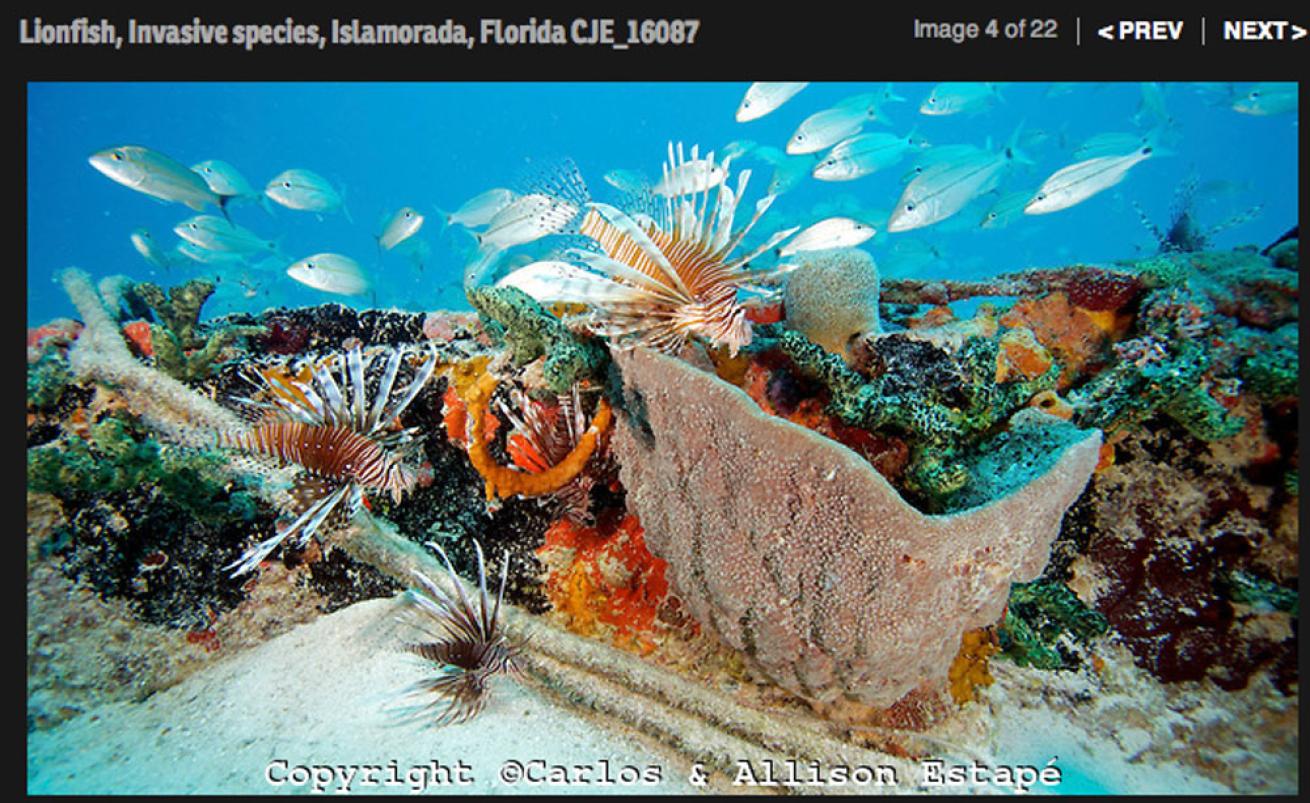
Carlos Estape
They are able to release over 2 million eggs yearly from a single female.

Lionfish derbies aren’t a new idea. Since 2009, Reef Environmental Education Foundation (REEF) — a marine conservation nonprofit headquartered in Key Largo, Florida — has literally spearheaded the problem, recruiting divers across the Southeast United States, Central America and the Caribbean for single-day tournaments called derbies, where divers receive tools and training necessary to remove as many lionfish as possible while scuba and free diving.
But how much good can one day do against a problem as vast as the lionfish invasion, which now extends as far north as Massachusetts, as far south as Venezuela, and throughout the entire Caribbean and Gulf of Mexico — an area larger than the entire United States?
New research suggests the answer is: plenty.
In one example, divers removed a whopping 1,043 lionfish during the 2012 Palm Beach County Lionfish Derby. According to lionfish prey-consumption models, those 1,043 lionfish would have consumed 2 million to 8.8 million prey fish over the next year. Ongoing research conducted in the Florida Keys and Bahamas by REEF and Dr. Stephanie Green of Oregon State University indicates single-day derbies can effectively reduce local lionfish populations by as much as 70 percent over an area of nearly 40 square miles.
Effective derbies have widespread impacts beyond the ecological benefits of removing large numbers of lionfish. Those include:
Training divers and promoting year-round removals. During meetings prior to derbies, divers are trained to properly collect and handle venomous lionfish, increasing success and safety of participants. The goal is to build a volunteer removal force and encourage divers to remove lionfish throughout the year.
Providing specimens for research. In the past five years, tens of thousands of lionfish have been collected during derbies. While scientists often lack resources to acquire ample research specimens, REEF derbies conveniently provide thousands of lionfish samples. Length, weight, age, diet, reproductive status and genetics are assessed. Collecting data year after year in the same location tells scientists how the population is changing over time, and how it compares to populations in other regions.
Educating the public. Much of the general public still does not know about the lionfish problem. Local, national and international media coverage of derby events helps educate the public and raise awareness, even in areas not directly geographically connected to the invasion.
Developing a commercial market. After lionfish are brought in and scored, volunteers fillet and cook them, and the public is invited to free tastings. This is the first time many spectators have tasted lionfish, or learned how to safely handle or fillet them. These tastings encourage the consumption of lionfish in local restaurants. REEF also publishes a cookbook devoted to lionfish recipes.
Encouraging local derbies. REEF began a “sanctioned” lionfish-derby program this year to provide tools, direction and promotion for lionfish-hunting enthusiasts who want to start tournaments in their area. Recreational and professional divers realize that humans caused this invasion — probably introduced through the recreational aquarium trade in the mid-1980s — and it’s humans who must do something about it. Until other viable control strategies emerge, derbies remain an effective — and exhilarating — tool in the arsenal against the invasion.


